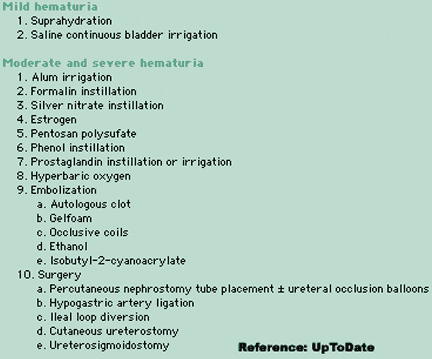Urinary (Other)
Pentosan polysulfate (elmiron ®)
| CLINICAL PHARMACOLOGY General: Pentosan polysulfate sodium is a low molecular weight heparin-like compound. It has anticoagulant and fibrinolytic effects. The mechanism of action of pentosan polysulfate sodium in interstitial cystitis is not known. INDICATIONS AND USAGE CONTRAINDICATIONS Adults: Oral: 100 mg 3 times/day taken with water 1 hour before or 2 hours after meals Administration SUPPLIED: |
Bethanecol (urecholine ® )
| Drug Category: Cholinergic Agonist. Indication: Nonobstructive urinary retention and retention due to neurogenic bladder.
Dosing (Adults): Gastroesophageal reflux (unlabeled): Oral: 25 mg 4 times/day. Supplied: [Tablet: 5 mg, 10 mg, 25 mg, 50 mg] |
Alum irrigation
| Alum irrigation -BLADDER HEMORRHAGE An astringent that induces hemostasis by precipitating protein over the bleeding surface. Since it has low cell permeability, its action is limited to the cell surface and interstitial spaces. Highlights:
Usual concentration: 1 percent alum bladder irrigation (base solution usually saline or sterile water). Reserved for moderate to severe hematuria/bladder hemorrhage. Average instillation rate: 250-300 ml/hour (2.5 - 3 grams/hour). In mild cases, saline continuous bladder irrigation or suprahydration may be used. |
Reference(s)
National Institutes of Health, U.S. National Library of Medicine, DailyMed Database.
Provides access to the latest drug monographs submitted to the Food and Drug Administration (FDA). Please review the latest applicable package insert for additional information and possible updates. A local search option of this data can be found here.


